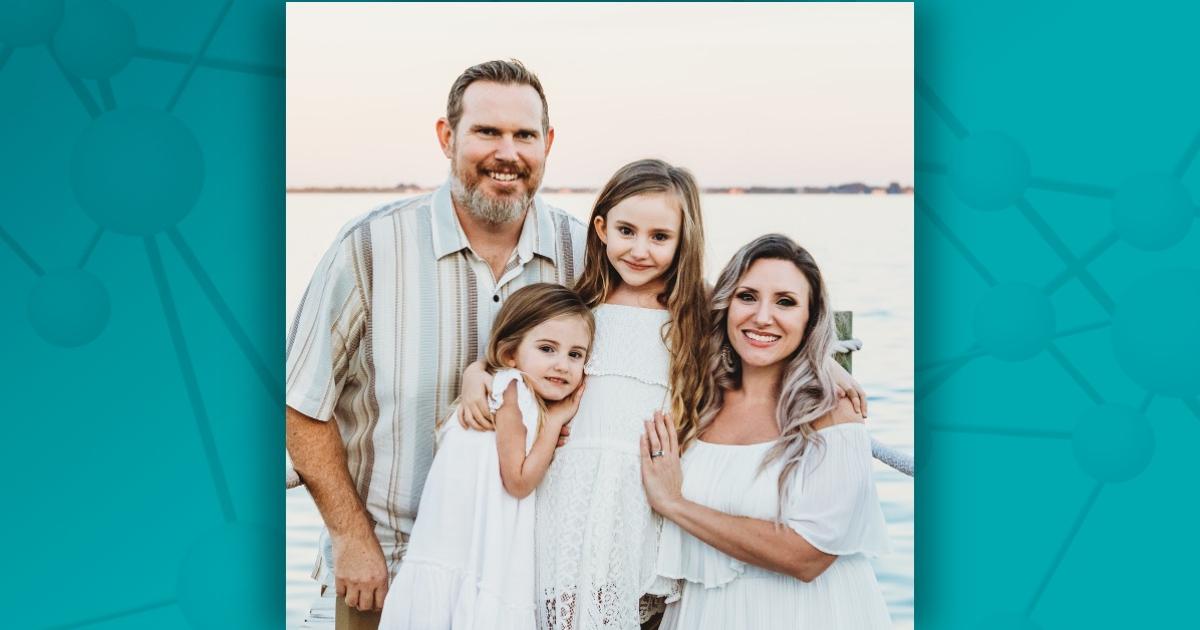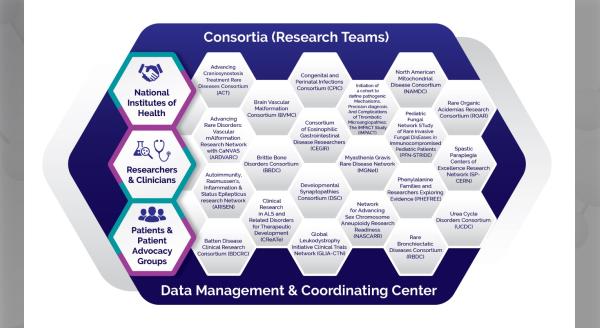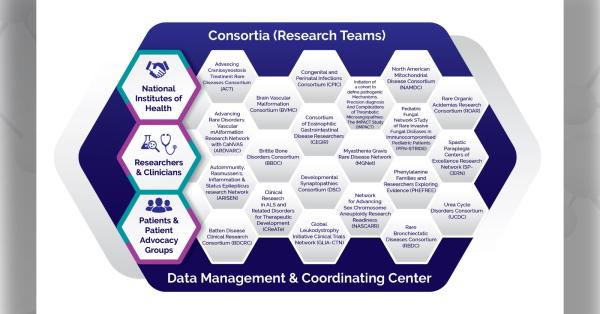Michelle Fynan, PhD, LMHC, is a mother of two daughters, age seven and four. She and her daughters are diagnosed with osteogenesis imperfecta (OI) type I, the mildest form of OI, which is characterized by bone fractures that often result from minor trauma. Here, Michelle shares her journey with OI, from adolescent struggles to finding her purpose as an OI activist and researcher.
When and how were you and your daughters diagnosed?
I was diagnosed with OI in 1984 at 16 months old, after I had my second, unexplained leg fracture. No one else in my family had OI before I came along. I went on to have around 30-40 fractures, several major surgeries, spinal fusion for scoliosis, and I used a wheelchair and walker for mobility well into my college years.
My first daughter was diagnosed with OI in utero when we saw in an ultrasound that one of her femurs appeared to be healing from a fracture. My second daughter did not appear to have any fractures in utero. But once she was born, we were able to see that she had many of our same physical characteristics that were indicative of OI. Now at ages 7 and 4, they have had two fractures each, but they are happy and active little firecrackers.
What has been your experience as a person living with a rare disease?
I consider myself extremely privileged to have parents who go above and beyond in everything they do for me. Not only did they reach out to the OI Foundation for support and connect with other local OI families, but they also made it a priority for us to attend the OI conferences as a family no matter where they were held. My mom went on to serve as a board member of the OI Foundation, and she became a co-chair of our Florida OI support group.
However, despite being connected with other people who have OI from a young age, I often felt like an outcast and a burden growing up. The fear of fracturing gave me a great deal of anxiety, and the feeling of being different far outweighed the pain that a fracture could bring on. Even today, the medical trauma I’ve experienced affects me, especially as I navigate parenthood while worrying about how OI will affect my children.
But these struggles have also become my greatest strengths. In living with a disability, I’ve learned that I’m my own best advocate. I’ve learned that while doctors and nurses are my heroes, they are still human, and I often know more about OI than they do. I’ve learned how to use my voice, but also how to actively listen to others. By learning how to sit with my own pain, I’ve found that I’m able to hold space for others as they do the same. This led me to earn my master’s degree in counseling and my PhD in clinical sexology, specializing in supporting the intimate lives of people with chronic illnesses and disabilities.
How did you get involved in research?
I’ve been involved in research studies as both the researcher and the subject. As a clinician, I’ve extensively researched the psychosocial aspects of disability, especially as it pertains to relationships and intimacy. I have also served as a dissertation chair to my clinical sexology doctoral students, and I currently serve on a thesis committee for a genetic counseling student who is studying the parental experiences and satisfaction with genetic counseling after receiving a prenatal diagnosis of OI. As a member of the OI community, I actively participate in research by opting to receive notifications from the OI registry about survey participation requests.
How did you first hear of the BBDC, and how have you been involved?
I learned about the BBDC from Tracy Hart while serving on a Patient Centered Outcomes Research (PCOR) committee, where we focused on patient-centeredness and engagement in OI research. I’ve had the pleasure of meeting several people who are involved with the BBDC over the years through my work with the OI Foundation. At the OI Foundation’s 17th Annual Scientific Meeting, as well as several regional and national OI conferences, I have presented my research on the psychosocial aspects of OI and shared about my lived experiences as well.
How has research made an impact in your life?
As someone with a rare disease, it feels as though I’ve always had a reverence for research. I have always known that OI was rare and that there is no cure. But I was also always reminded that with the help of research, someday there may be one. I personally have a deep appreciation for the ways that my disability has enriched and enhanced my life. But I’m also brought to tears of relief for my girls as I read about the incredible advances in treatments and potential cures that are on the horizon. Becoming a mom has shifted my researcher brain into “Mission Mode,” and I’m deeply grateful for the amazing researchers who are with me on this mission.
The Brittle Bone Disorders Consortium (BBDC) is part of the Rare Diseases Clinical Research Network (RDCRN), which is funded by the National Institutes of Health (NIH) and led by the National Center for Advancing Translational Sciences (NCATS) through its Division of Rare Diseases Research Innovation (DRDRI). BBDC is funded under grant number U54AR068069 as a collaboration between NCATS, the National Institute of Arthritis and Musculoskeletal and Skin Diseases (NIAMS), the Eunice Kennedy Shriver National Institute of Child Health and Human Development (NICHD), and the National Institute of Dental and Craniofacial Research (NIDCR).







